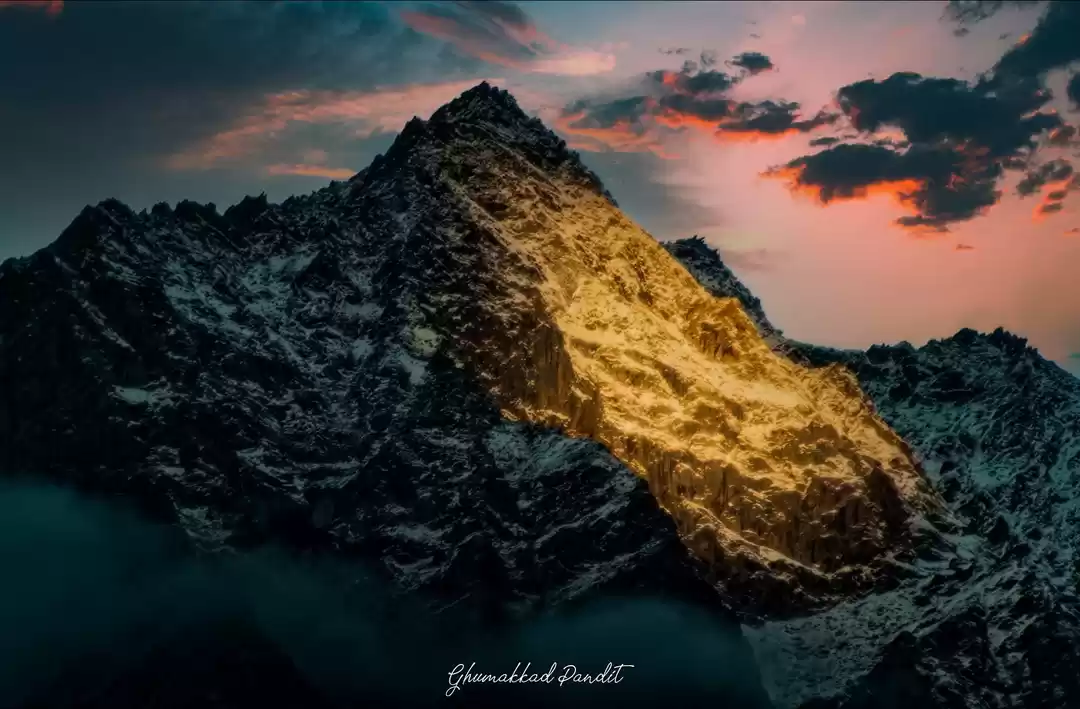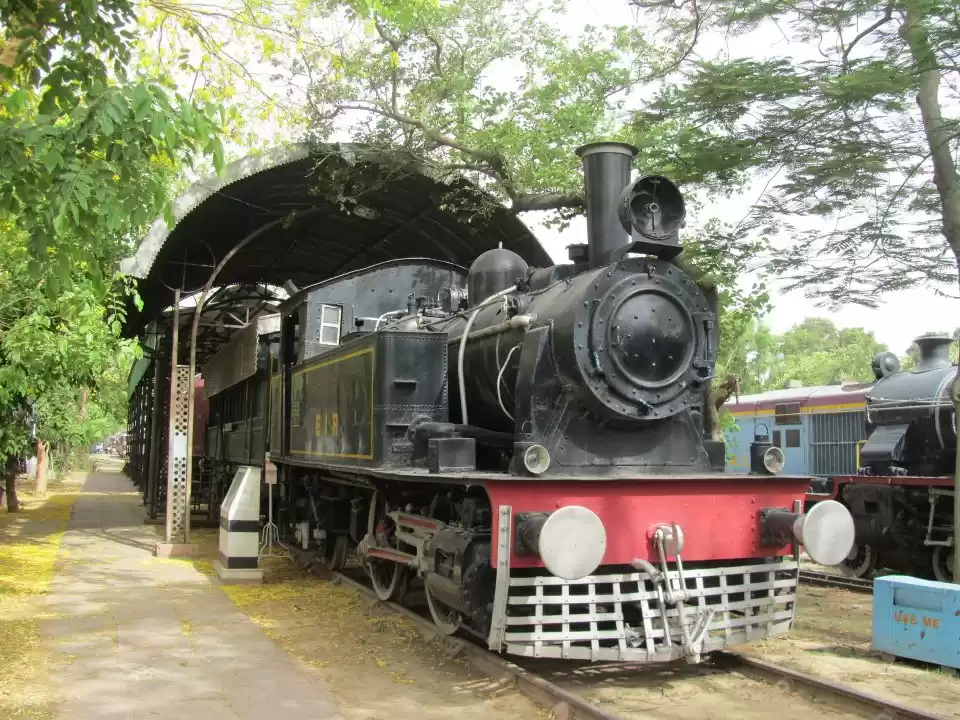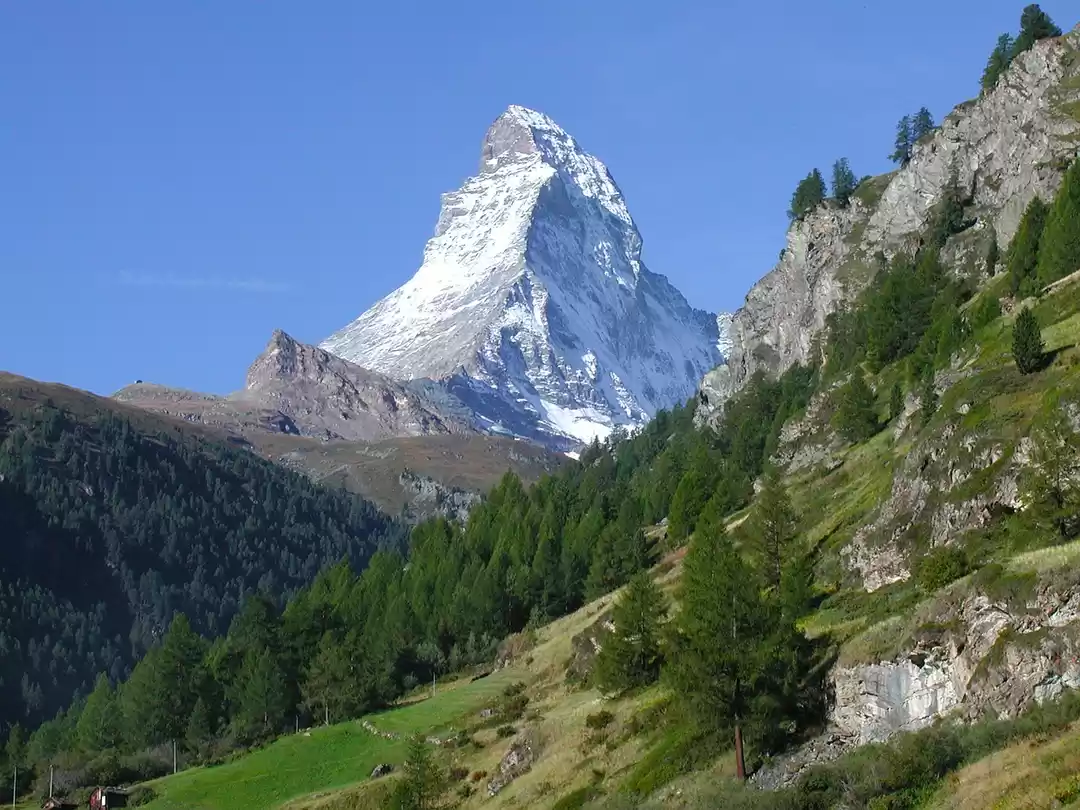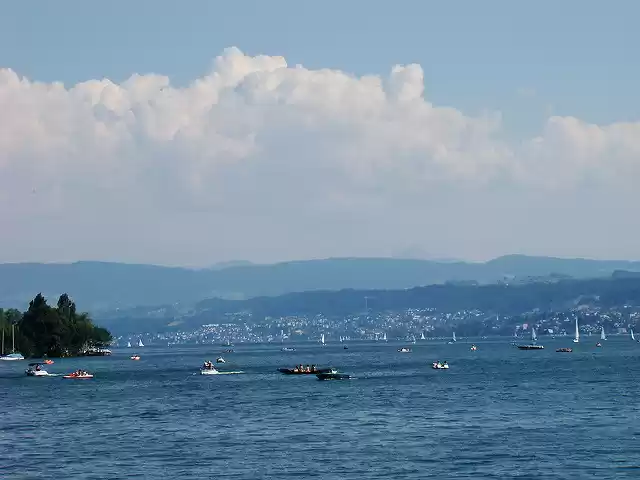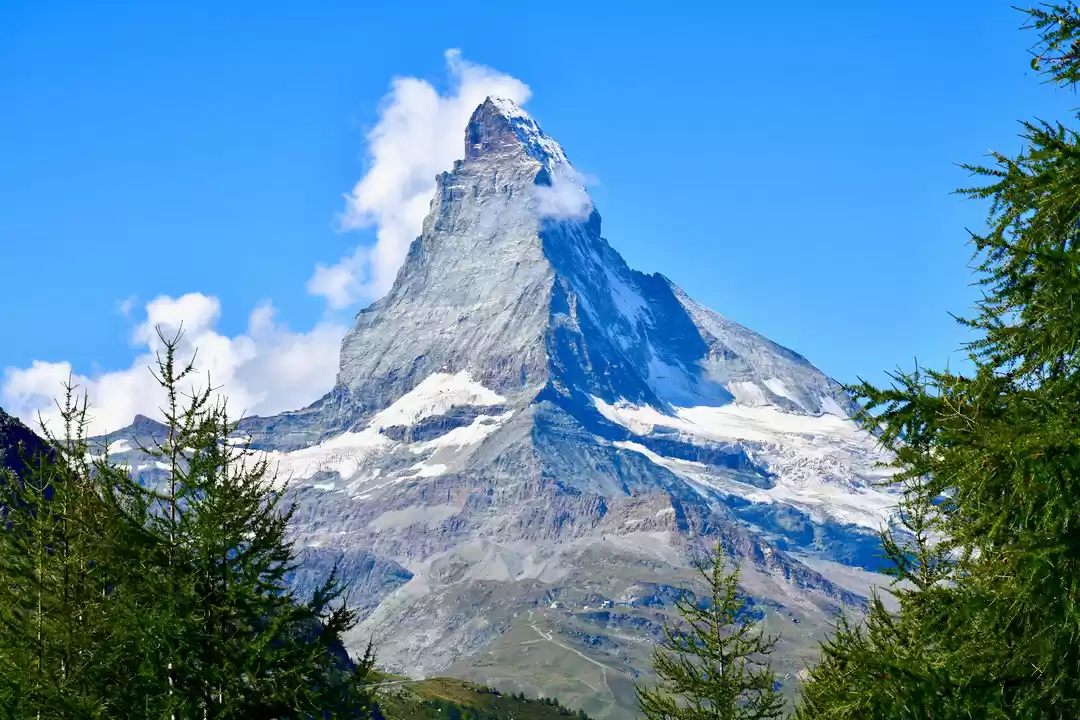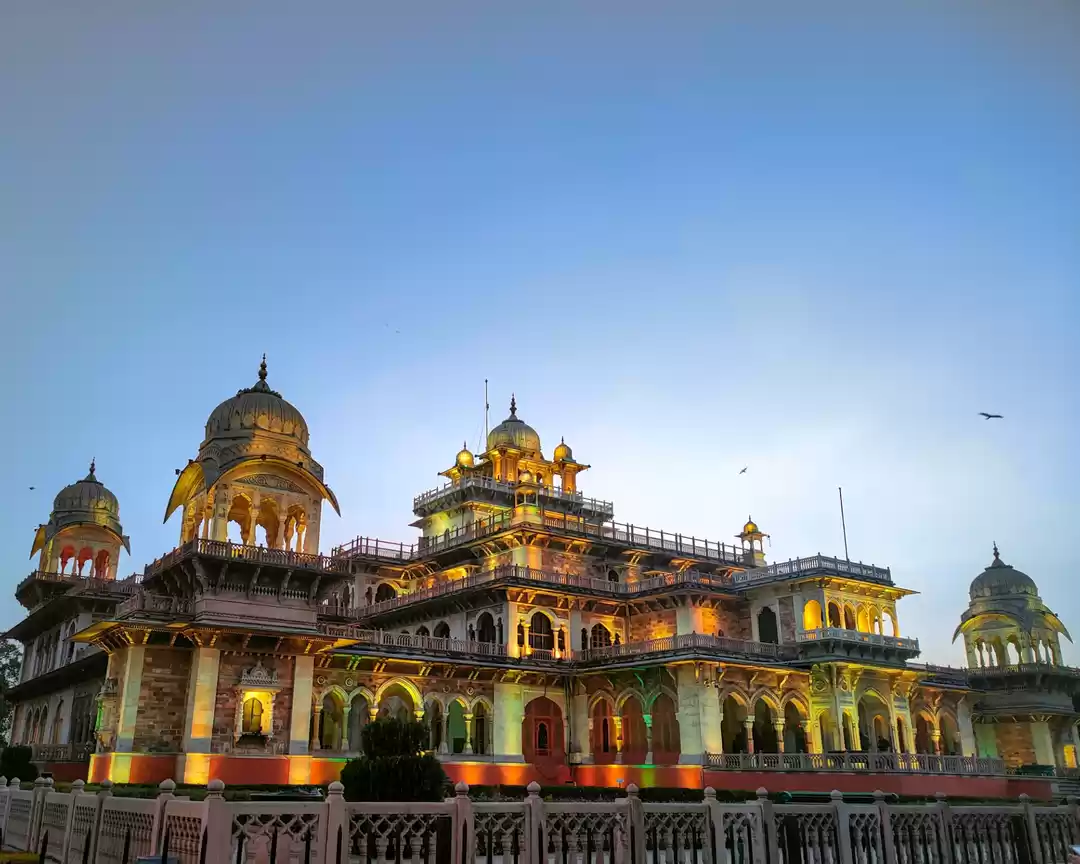Are you looking for an unforgettable adventure in the heart of the Swiss Alps? Do you want to witness one of the most iconic and majestic mountains in the world? If yes, then you should definitely visit the Matterhorn Mountain in Zermatt, Switzerland. The Matterhorn is a stunning peak that rises 4,478 meters above sea level and attracts millions of visitors every year. Whether you are a thrill-seeker who wants to climb the mountain or a nature-lover who wants to enjoy the scenic beauty and activities around it, the Matterhorn has something for everyone.
In this article, we will provide you with a complete guide for travelers and climbers who want to explore the Matterhorn Mountain, covering various aspects such as its history, culture, geology, tourism, climbing, things to do, hotels, best time, and how to reach. By the end of this article, you will have all the information you need to plan your trip to the Matterhorn Mountain and make the most of your experience. So, let’s get started!
About Matterhorn Mountain
The Matterhorn Mountain is one of the most famous and recognizable mountains in the world, and for good reasons. It has a unique shape that resembles a pyramid or a horn, and it is surrounded by four steep faces that face the four cardinal directions. The Matterhorn is located in the Pennine Alps, on the border between Switzerland and Italy, and it is the main attraction of the resort town of Zermatt in the Swiss canton of Valais. The Matterhorn was first ascended in 1865 by a team of seven climbers led by Edward Whymper, who reached the summit via the Hörnli ridge. The ascent was a historic achievement, but it also ended in tragedy, as four of the climbers died during the descent. Since then, the Matterhorn has become a symbol of mountaineering and alpinism, and it has been climbed by thousands of people from all over the world.

The Matterhorn is also a part of the Swiss culture and identity, and it has inspired many artists, writers, filmmakers, and even chocolatiers. The name Matterhorn comes from the German words “Matte” meaning meadow and “Horn” meaning peak, but the mountain is also known by other names, such as Monte Cervino in Italian, Mont Cervin in French, and Cervino in Romansh.
The Matterhorn is not only a beautiful and impressive mountain, but also a fascinating and complex one. It has a rich and diverse geography, weather, geology, and formation, that make it a unique natural wonder.
Facts and features of the Matterhorn
Here are some of the interesting facts and features of the Matterhorn Mountain:

- The Matterhorn is the 12th highest mountain in Europe and the 6th highest in the Alps.
- The Matterhorn has a prominence of 1,042 meters, which means that it is the height of the mountain above the lowest point of the land that connects it to a higher mountain. The Matterhorn is the 30th most prominent mountain in the world.
- The Matterhorn has four main ridges and four main faces. The ridges are the Hörnli, the Furggen, the Leone, and the Zmutt. The faces are the north, the east, the south, and the west. Each ridge and face has its own characteristics, challenges, and routes for climbing.
- The Matterhorn has a complex and varied weather system, that can change rapidly and unpredictably. The weather is influenced by the altitude, the season, the wind, the clouds, and the precipitation. The temperature can range from -20°C to 15°C, and the wind speed can reach up to 200 km/h. The weather can also create optical phenomena, such as the alpenglow, the halo, and the banner cloud.
- The Matterhorn has a diverse and dynamic geology, that reveals the history and evolution of the mountain. The Matterhorn is composed of different types of rocks, such as gneiss, granite, schist, and limestone, that were formed by various processes, such as metamorphism, magmatism, sedimentation, and erosion. The rocks also show the traces of the tectonic movements, such as the collision, the folding, and the faulting, that shaped the mountain over millions of years.
- The Matterhorn has a remarkable and mysterious formation, that is still a subject of debate and research. The Matterhorn is believed to have been formed by the uplift and erosion of an ancient mountain range, that was once part of the African plate. The uplift was caused by the collision of the African and Eurasian plates, that began about 50 million years ago and is still ongoing. The erosion was caused by the glaciers, the rivers, the wind, and the weathering, that sculpted the mountain into its current shape. However, the exact timing, sequence, and mechanism of the formation are still unclear and controversial.
- As you can see, the Matterhorn Mountain is a fascinating and complex natural wonder, that has a lot to offer to the curious and adventurous travelers. If you want to learn more about the Matterhorn Mountain, you can visit the Matterhorn Museum in Zermatt, where you can find exhibits, artifacts, and stories about the mountain and its history, culture, and tourism. You can also read some of the books, watch some of the movies, or taste some of the chocolates, that are inspired by the mountain and its beauty.
Climbing the Matterhorn
If you are a thrill-seeker who wants to challenge yourself and experience the ultimate adventure, then you may want to climb the Matterhorn Mountain. Climbing the Matterhorn is not for the faint-hearted, as it requires a high level of physical fitness, technical skills, mental toughness, and preparation. The Matterhorn is one of the most difficult and dangerous mountains to climb in the world, and it has claimed the lives of more than 500 climbers since the first ascent. However, climbing the Matterhorn is also one of the most rewarding and exhilarating experiences you can have, as it offers stunning views, thrilling challenges, and a sense of achievement. If you are interested in climbing the Matterhorn, here are some of the things you need to know:
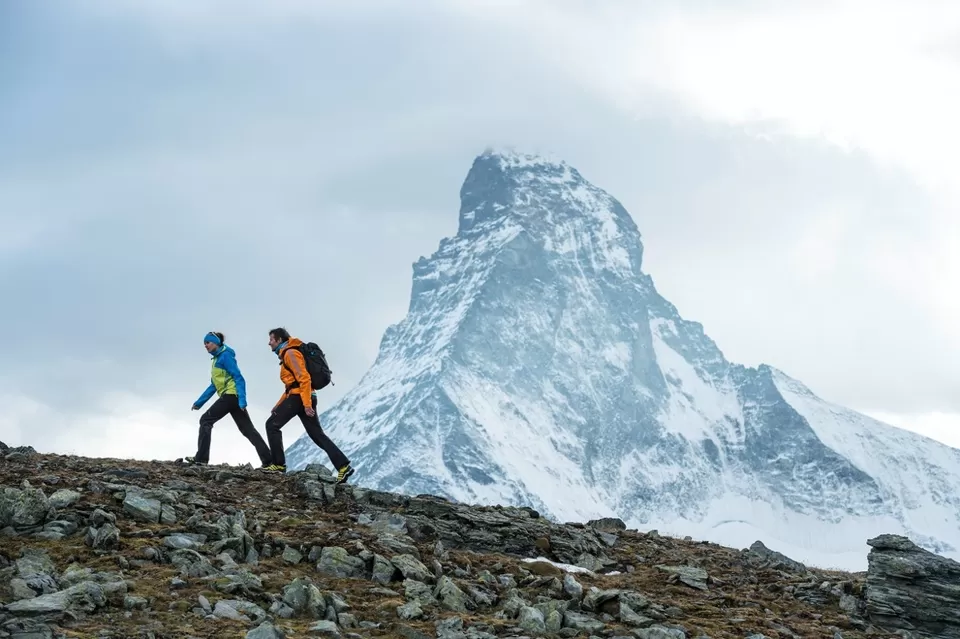
1. You need to have an alpine mountaineering experience, which means that you have climbed other mountains of similar or higher difficulty and altitude before. You also need to be proficient in using ropes, crampons, ice axes, and other climbing equipment. You need to be able to cope with the effects of high altitude, such as low oxygen, cold, and fatigue. You need to be able to handle the risks and hazards of climbing, such as falling rocks, avalanches, crevasses, and bad weather.
2. You need to choose a climbing route that suits your level of experience, skills, and preferences. The Matterhorn has four main ridges and four main faces, each with its own characteristics, challenges, and routes. The most popular and easiest route is the Hörnli ridge, which is the same route that was used by the first ascenders. The Hörnli ridge is also the most crowded and busy route, especially during the peak season. The other routes are more difficult and less frequented, and they require more time, equipment, and expertise. Some of the other routes are the Furggen ridge, the Leone ridge, the Zmutt ridge, and the north face.
3. You need to book a place at the Hörnli Hut, which is the base camp for most of the climbers who attempt the Matterhorn. The Hörnli Hut is located at 3,260 meters, and it can accommodate up to 170 climbers per night. The Hörnli Hut provides beds, blankets, food, water, toilets, showers, and electricity. You need to book your place well in advance, as the hut is often fully booked during the peak season. You can book your place online or by phone, and you need to pay a fee of 150 CHF per person per night. You also need to bring your own sleeping bag, towel, and toiletries.
4. You need to start your climb early in the morning, preferably before sunrise, as the climb can take up to 10 hours round trip. You need to follow the marked trail and the fixed ropes that lead to the summit. You need to be careful and attentive, as the trail is steep, narrow, exposed, and slippery. You need to be prepared for the changing weather and temperature, and dress accordingly. You need to carry a backpack with the essential items, such as water, food, sunscreen, sunglasses, hat, gloves, jacket, first aid kit, and camera. You need to climb at a steady pace, and take breaks when necessary. You need to stay hydrated and eat enough, and avoid alcohol and tobacco. You need to monitor your health and well-being, and watch out for any signs of altitude sickness, such as headache, nausea, dizziness, or shortness of breath. You need to descend as soon as possible if you feel unwell or if the weather deteriorates.
5. You need to hire a guide if you are not an experienced or confident climber. A guide can provide you with the necessary skills, knowledge, equipment, and safety measures to climb the Matterhorn. A guide can also help you with the planning, booking, and logistics of your climb. A guide can also enhance your enjoyment and appreciation of the climb, as they can share their stories, insights, and tips with you. You can find and book a guide online or through a local agency, and you need to pay a fee of around 1,000 CHF per person per day.
Climbing the Matterhorn is a once-in-a-lifetime opportunity that you will never forget. It is a challenging and rewarding adventure that will test your limits and push your boundaries. It is a dream come true for many climbers and adventurers who want to conquer one of the most iconic and majestic mountains in the world. If you are one of them, then you should definitely give it a try. You will not regret it.
Things to do around Matterhorn Mountain
If you are not a climber, or if you want to enjoy some other activities besides climbing, then you will be happy to know that there are plenty of things to do around the Matterhorn Mountain. The Matterhorn is surrounded by a beautiful and diverse landscape, that offers many opportunities for fun, relaxation, and exploration. Whether you are looking for some adrenaline, some culture, or some nature, you will find something that suits your taste and mood. Here are some of the best things to do around the Matterhorn Mountain:

Skiing and snowboarding:
If you are a winter sports enthusiast, then you will love skiing and snowboarding around the Matterhorn. The Matterhorn is part of the Zermatt ski area, which is one of the largest and most popular ski areas in the world. The Zermatt ski area has over 360 km of slopes, ranging from easy to expert, and it is open all year round. You can enjoy the stunning views of the Matterhorn and the other peaks, while gliding on the snow and feeling the thrill of speed. You can also try some of the off-piste routes, such as the Schwarzsee, the Stockhorn, or the Theodul Glacier, where you can experience the untouched and pristine snow.
You can also take the cable car to the Klein Matterhorn, which is the highest cable car station in Europe, and ski or snowboard on the highest slopes in the Alps. You can find and book ski and snowboard equipment, lessons, and passes online or through a local agency, and you need to pay a fee of around 80 CHF per person per day.
Hiking:
If you are a nature lover, then you will enjoy hiking around the Matterhorn. The Matterhorn is surrounded by a network of hiking trails, that cover various distances, difficulties, and altitudes. You can choose a trail that suits your level of fitness, skills, and preferences, and explore the scenic beauty and diversity of the area. You can hike through the alpine meadows, where you can see the colorful flowers and the grazing cows. You can hike along the lakes, where you can admire the reflections of the mountains and the sky.
You can hike to the viewpoints, where you can get the best views of the Matterhorn and the other peaks. You can also hike to the huts, where you can rest, eat, and drink. Some of the best hiking trails around the Matterhorn are the Matterhorn Glacier Trail, the 5-Seenweg Trail, the Hörnliweg Trail, and the Europaweg Trail. You can find and book hiking equipment, guides, and maps online or through a local agency, and you need to pay a fee of around 20 CHF per person per day.
Matterhorn Glacier:
If you want to experience the ice and snow of the Matterhorn, then you should visit the Matterhorn Glacier. The Matterhorn Glacier is a large and impressive glacier, that covers the south and west faces of the Matterhorn. The Matterhorn Glacier is also a part of the Glacier Paradise, which is a complex of attractions and activities that are located on the Klein Matterhorn. You can take the cable car to the Glacier Paradise, and enjoy the various features, such as the Glacier Palace, the Ice Flyer, the Snow Park, and the Cinema Lounge. The Glacier Palace is an underground ice tunnel, where you can see the sculptures, the crystals, and the ice slides. The Ice Flyer is a chairlift, that takes you over the glacier and gives you a bird’s eye view of the landscape.
The Snow Park is a fun area, where you can try some of the snow activities, such as tubing, sledding, or snowshoeing. The Cinema Lounge is a cozy place, where you can watch some of the movies and documentaries about the Matterhorn and the Alps. You can find and book the cable car tickets, the Glacier Paradise tickets, and the snow activities online or through a local agency, and you need to pay a fee of around 100 CHF per person per day.
The Matterhorn Mountain is a magnificent and legendary mountain, that deserves to be on the bucket list of every traveler and climber. The Matterhorn Mountain offers a variety of attractions and activities, that cater to different tastes and preferences. You can visit the Matterhorn Mountain at any time of the year, and find something that suits your mood and season. You can reach the Matterhorn Mountain easily, by train, car, or plane, and start your journey from the charming town of Zermatt. The Matterhorn Mountain is a complete guide for travelers and climbers, who want to have an unforgettable adventure in the heart of the Swiss Alps. If you are one of them, then you should definitely book your excursion to the Matterhorn Mountain today, and make your dream come true. You will not regret it.
Thank you for reading, and we hope you enjoyed this article. Please share your feedback or questions with us, and we will be happy to help you.






